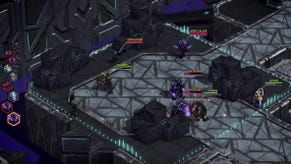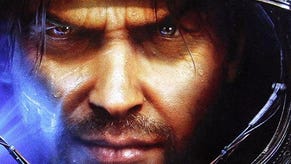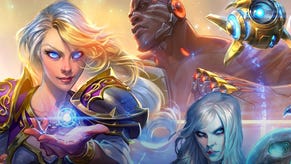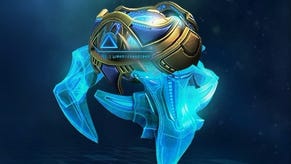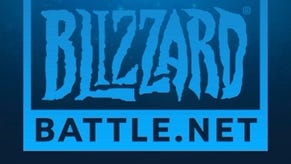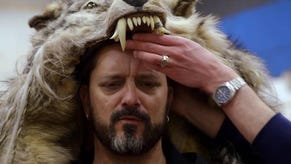The Men Who Stare At Protoss
StarCraft commentators explain why we watch them.
"In the competitive gaming scene there have been many great games that haven't had traction because they're really old," Plott says. Is anyone really going to spend much time watching a game that looks like it can be played on an Amiga 500?
Of course, games that have already been culturally accepted don't need any pizazz. "A game like chess doesn't need to be pretty, because people already get it."
That's why StarCraft: Brood War is still huge in South Korea, Plott explains – it rose to popularity there very early.
"For a company in the West, it's impossible to say they picked up Brood War from the start," Plott says. "If they watched it now, they'd say, 'Look at this thing, it looks like a f***ing cartoon.'"
3. It must be observable.
Wait a minute... StarCraft is observable?
"You'd think it'd be hard to watch," Plott says. "But all of it is colour-coded. There's the blue army versus the yellow army – you can delineate each colour to a person."
Lamond agrees. "All you have to know is that each side is trying to destroy as much of the opposite colour as possible."
But what about the different races? The units? The abilities? Could somebody unfamiliar with the game really pick up on what's happening at all times?
"StarCraft is pretty damn straightforward," Plott says. "You don't have to know what psionic storm means, because you see lightning going over something, and you figure it out."
He compares it to Warcraft III, which "has a huge problem with observability". While StarCraft features humans and aliens, Warcraft adds heroes, elves, creeps, auras, undead, and a host of other bizarre concepts and terminology. It's far more difficult to grasp.
Plott sums it up succinctly. "For a game to be observable, it needs to be fairly clear what's going on without much explanation. In StarCraft, all you do is collect money and build up an army in an attempt to kill someone."
That might sound overly simplistic, but isn't that a summary of any StarCraft match? Strip out all of the nitty-gritty details and you have two armies duking it out, just like any other conflict or sport. Can't any audience understand that?
"I've shown [my videos] to people who've never even played a computer game and they've fallen in love with it," Lamond says. "I've met kids aged 7-8 who are fans, and I've met people in their 60s who are fans."
The demographics don't lie.
If you had told me a year ago that I'd spend hours watching other people play videogames, I'd have laughed in your face. Watching friends fumble around in Super Mario Bros. without holding the run button was frustrating enough – why would I want to watch gamers I didn't even know? StarCraft commentators changed my mind. Professional StarCraft II games can be visceral, hilarious, shocking, emotional, and above all, entertaining.
I don't know how large the competitive StarCraft II scene will grow in the coming years, but its immense popularity bodes well for the future of e-sports. If the game ever does grow as mainstream as basketball or football, talented commentators like Plott and Lamond will be a large part of the reason. Head to their respective pages and you can see their talents for yourself – even if you don't know a zealot from a zergling, these guys are worth checking out. That is, if you can tear your eyes away from the ant farm.
